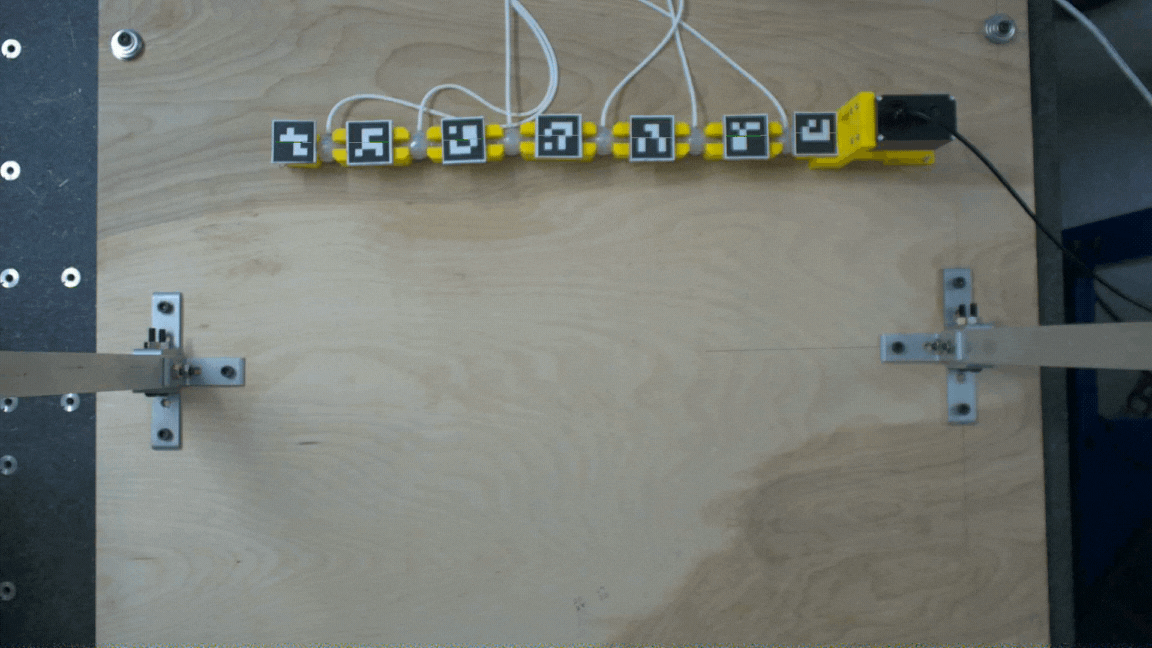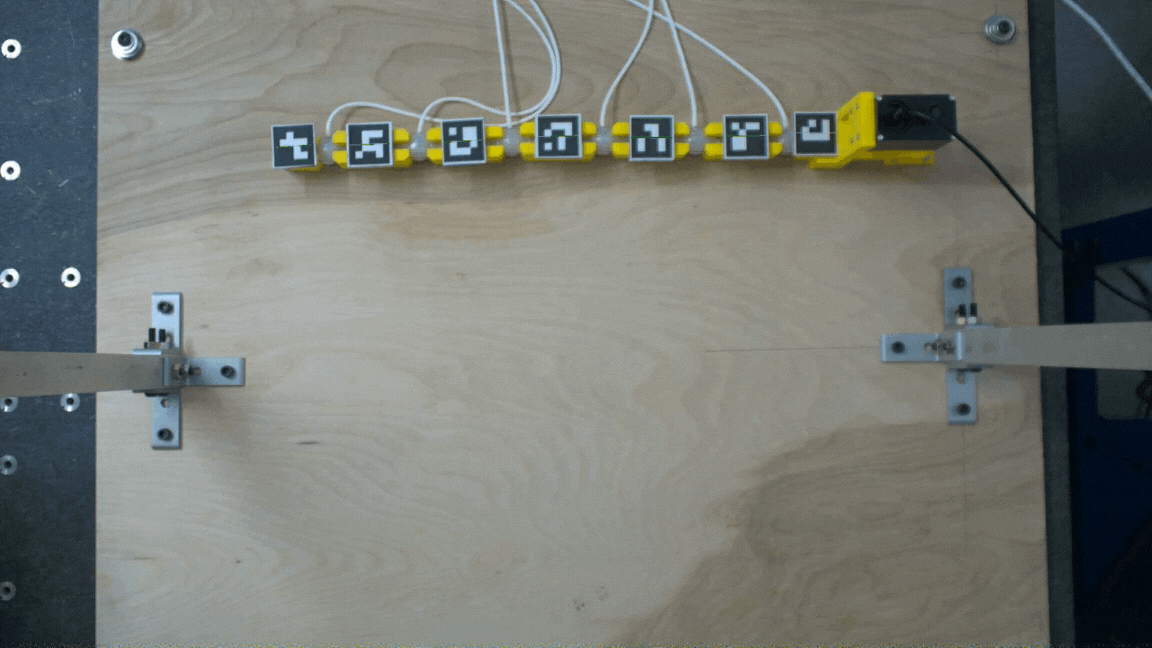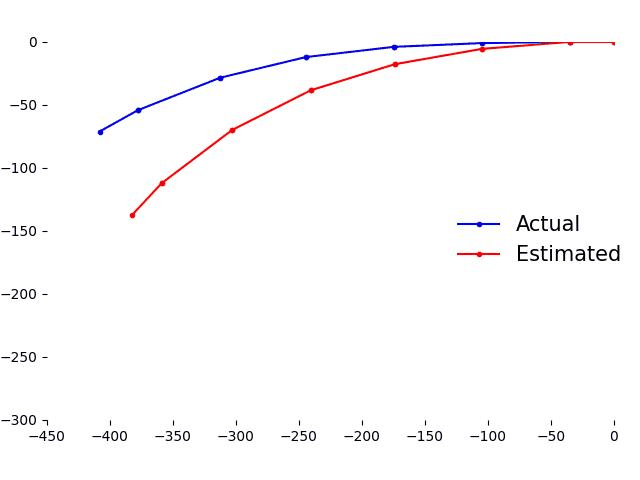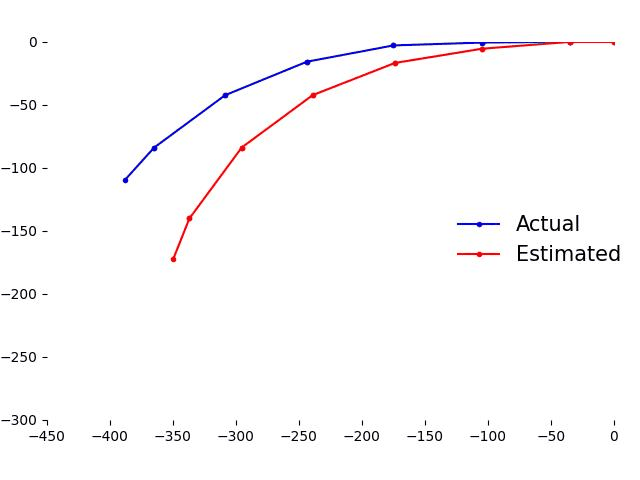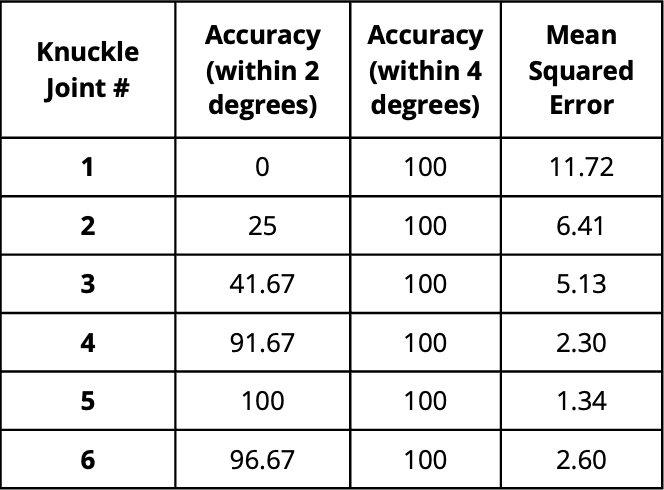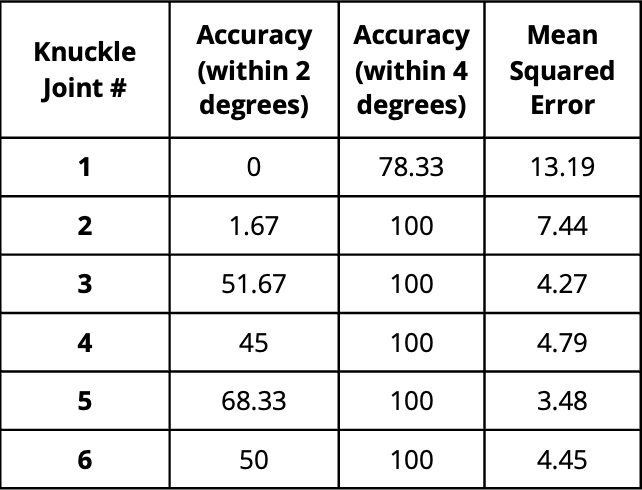Proprioception using hydraulic knuckles on tendon driven multi link mechanism
Hydraulic knuckles used for joint state estimation while acting as variable stiffness joints on a tendon driven multi link mechanism
In addition to the hydraulic knuckles being used as variable stiffness joints, they were also used for proprioception i.e. state estimation for joint angles. The intrinsic property of change in internal pressure due to the bending on knuckles is exploited to develop a state estimation model using feed forward neural network. This eliminates the use of additional positional encoders.
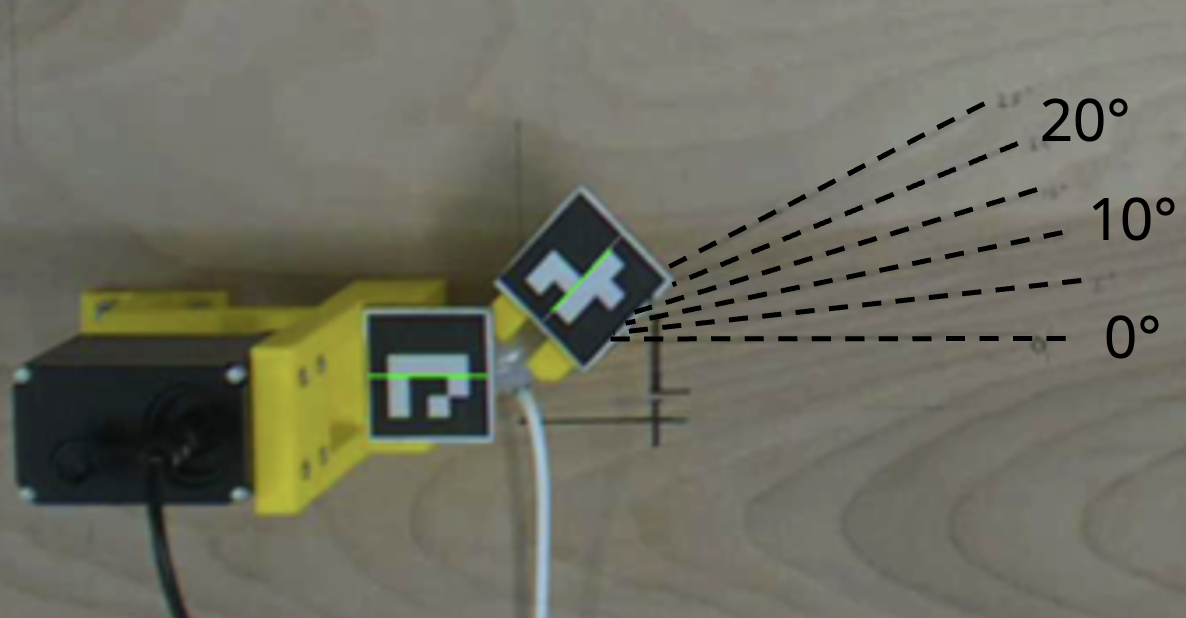



A multi link tendon driven mechanism with hydraulic knuckles as VSJs was fabricated to generate planar trajectories by controlling internal knuckle pressures and tendon tension. The state estimation model was validated on this multi link mechanism as well.
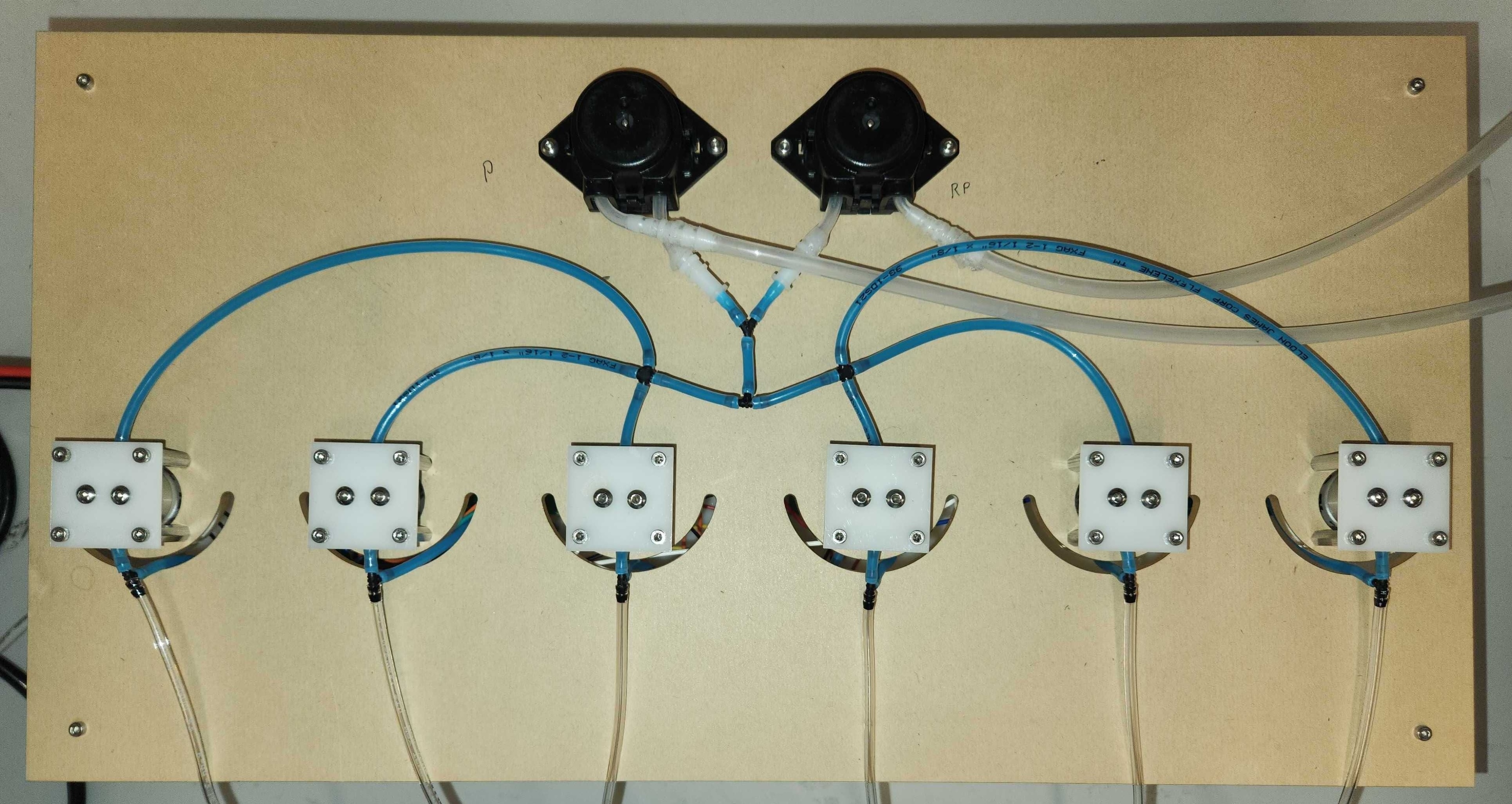
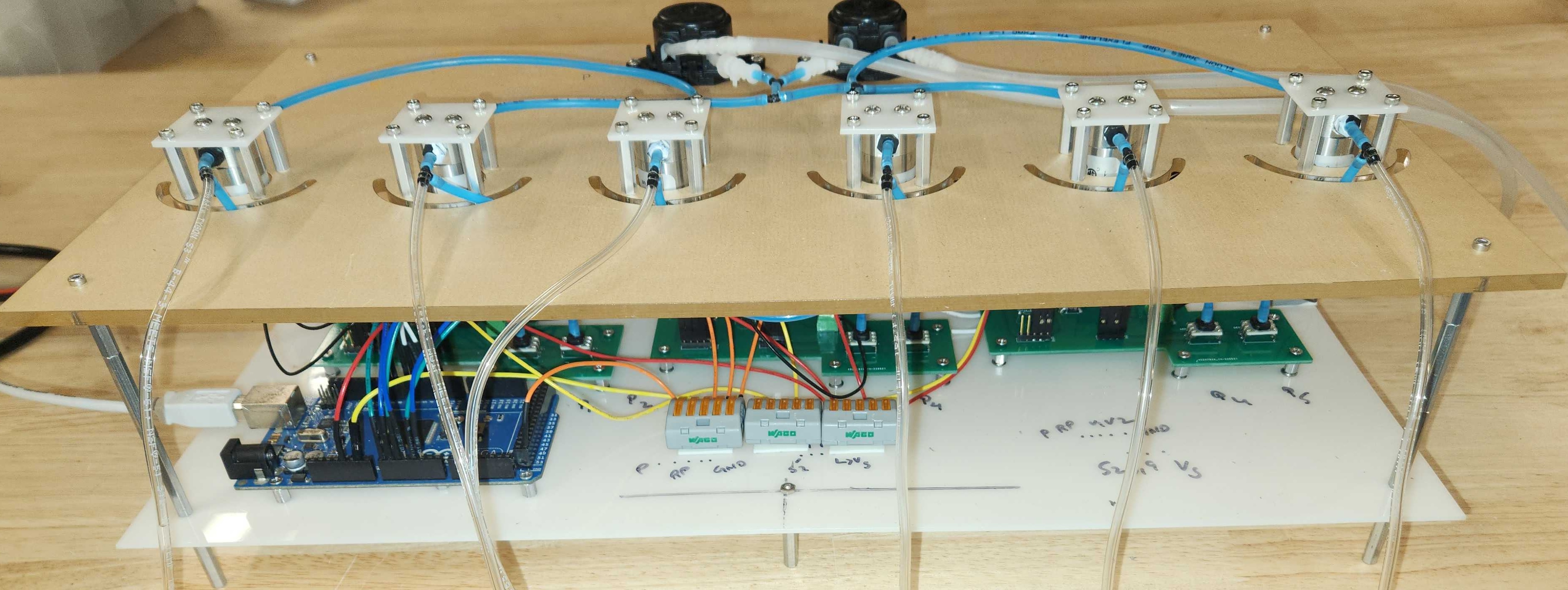
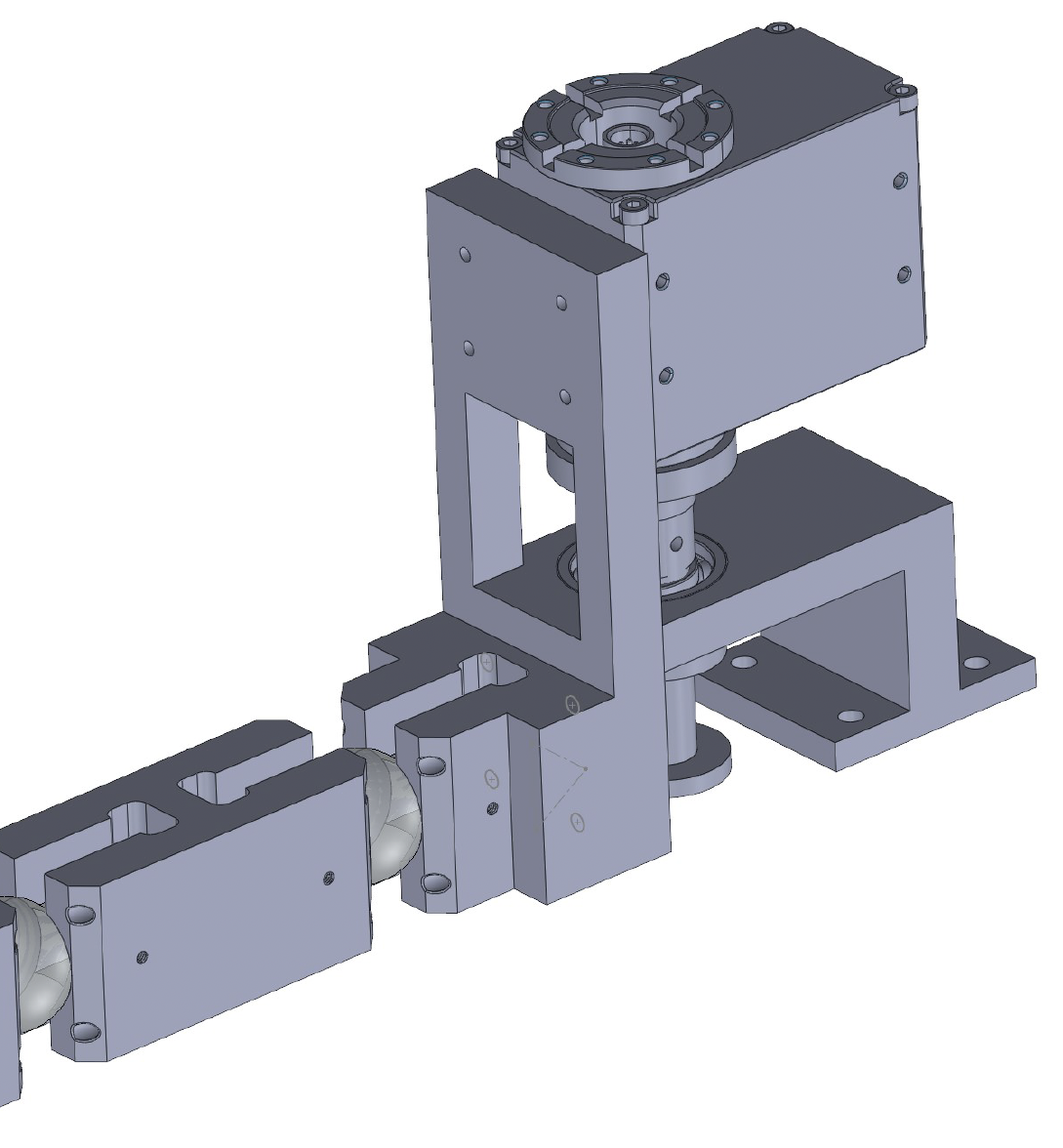
The results of multi link mechanism activated with two different set of starting pressure angles are presented. The trajectory that resembles wrap type grasp has a pressure combination of 1, 1, 5, 5, 5, 5 psi starting from the most proximal joint (considering ground link) to the most distal joint. Similarly, the pressure combination for a pinch type grasp trajectory is 5, 5, 5 ,5 ,1 ,1 psi.
